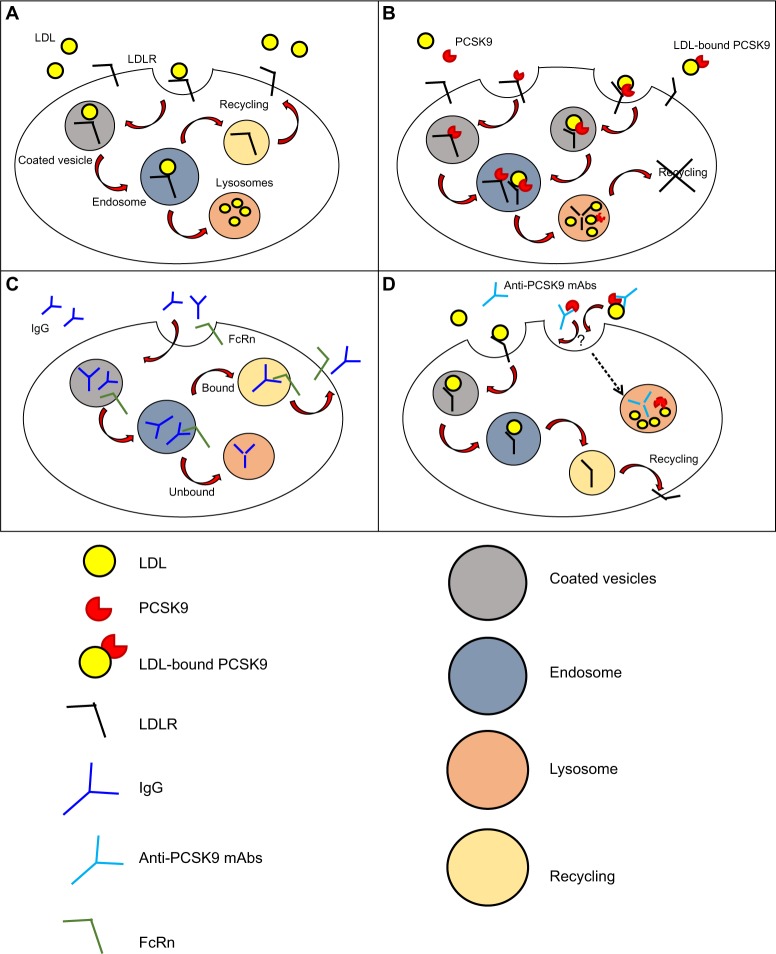Figure 1.
Mechanism of action and clearance for PCSK9 and anti-PCSK9 antibodies.
Notes: (A) Mechanism of LDL internalization by LDLR. Once LDL binds to LDLR it invaginates and is internalized into coated endocytic vesicles that form endosomes. LDL dissociates from LDLR, and LDLR is recycled on the cell surface. The entire cycle takes 10–15 minutes. (B) PCSK9 (unbound PCSK9 or LDL-bound PCSK9) directly binds the EGF-A domain of LDLR and targets LDLR toward intracellular degradation through an endosomal/lysosomal route. PCSK9 half-life in plasma is approximately 5 minutes. It is unknown whether the kinetics of unbound PCSK9 or LDL-bound PCSK9 differ. (C) IgG elimination. IgG internalization is mediated by fluid phase pinocytosis or receptor mediated endocytosis, followed by intracellular degradation of the IgG in the lysosome. A significant fraction of IgG is not targeted toward lysosomal degradation, but is redirected to the cell surface and released into the plasma through a process mediated by FcRn. (D) PCSK9-mAbs complex elimination. The elimination is presumably mediated by PCSK9 through a mechanism similar to PCSK9-mediated degradation of LDLR (degradation through endosomal/lysosomal route). However, a clear mechanism has not been described.
Abbreviations: LDL, low-density lipoprotein; LDLR, LDL receptor; mAbs, monoclonal antibodies; IgG, immunoglobulin G; PCSK9, pro-protein convertase subtilisin/kexin type 9; FcRn, neonatal Fc receptor.

